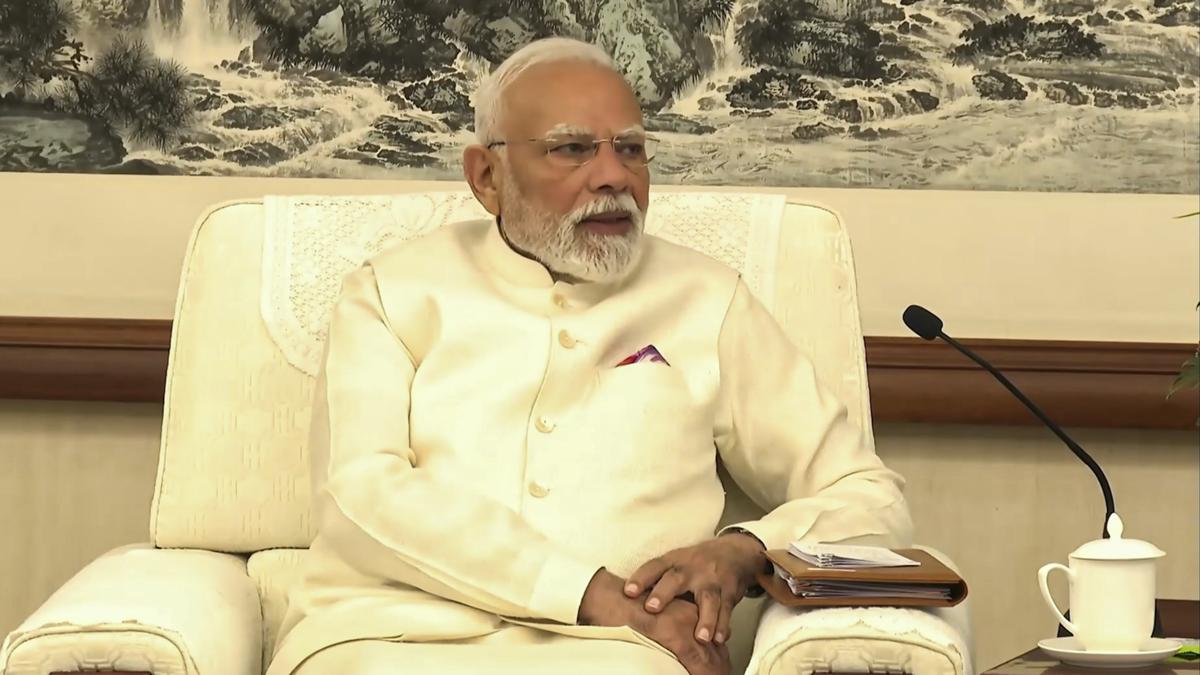ARTICLE AD BOX
A key takeaway of Operation Sindoor was that the IAF was able to achieve “conflict termination” in less than 50 weapons fired by it at select Pakistani military targets, Vice Chief of Air Staff Air Marshal Narmdeshwar Tiwari said Saturday at a defence summit.
At the same event, Defence Minister Rajnath Singh said there are no permanent friends or enemies in geopolitics and that India’s defence infrastructure should not be dependent on any uncertain foreign interference, but based on its own capabilities. His comments came amid tariff tensions with the US.
“A key takeaway for us was in less than 50 weapons, we were able to achieve conflict termination. It has not happened before. We made every weapon count,” Air Marshal Tiwari said at the NDTV Defence Summit, referring to the strikes carried out following Pakistan’s attack on the intervening night of May 9 and 10.
He added that this forced Pakistan by the mid-day of May 10 to request an end to the conflict. On the targets hit, Air Marshal Tiwari said “some of them were not hit even during the 1971 war and that is a tacit acknowledgement of the capability of our planners and people who executed the missions”. “That’s the kind of extent and damage to capability we had caused to them.”
India launched Operation Sindoor on May 7 to strike terror infrastructure inside Pakistan in response to the April 22 Pahalgam terror attack, and after four days of military hostilities between the two countries, a ceasefire was reached on May 10.
Air Marshal Tiwari said the plans to strike Pakistan were firmed up by May 5 and India was not willing to escalate the situation following its strikes on terror infrastructure inside Pakistan on the early morning of May 7.
“We expected a response and still kept it calibrated, and we engaged only military targets. But when the main attack came on the night of May 9-10, that was the time we decided that we needed to go and send the right message. We hit them pan-front,” he said.
Story continues below this ad
He said that long-range vectors were used to hit enemy targets, and it was risky due to the chances of collateral damage but forces ensured there was no collateral damage.
“You may have a long-range vector, but the work that goes behind making that vector or that weapon hit a target accurately is actually an effort of the whole team, not only the pilots who fired them. There are a lot of people on the ground who make that happen,” he said.
Stress on self-reliance
Hailing Operation as a shining example of India’s growing indigenous defence capabilities, the Defence Minister said, “We do not consider any country our enemy. But the welfare of our people, farmers, small businesses and common citizens is our top priority. The more pressure the world applies, the stronger India emerges.”
He said that the precise strikes carried out by the forces using indigenous equipment demonstrated that no mission can be successful without vision, long preparation and coordination.
Story continues below this ad
“Operation Sindoor may appear to be a story of a war of a few days, India’s victory and Pakistan’s defeat, but years of strategic preparation and defense preparedness have played a role behind it,” he said, adding that the Sudarshan Chakra Mission is a game-changing initiative for the country’s future security.
A Defence Ministry statement highlighted that the mission envisions providing complete aerial protection to critical locations across the country within the next decade, using both defensive and offensive technologies.
Highlighting the growing importance of air defence in modern warfare, he said that the DRDO successfully tested an indigenous integrated air defence weapon system, which hit three targets simultaneously, marking the first step towards realising PM Narendra Modi’s vision.
He said that while the full implementation will take time, the Defence Ministry has already moved decisively towards that direction. On indigenous development of an aero-engine, he said preparations are now almost complete and work will be visible soon at the ground level, adding that defence exports have risen from under `700 crore in 2014 to nearly `24,000 crore in 2025.
Story continues below this ad
Later, at another event in Noida, Singh inaugurated a state-of-the-art test facility of Raphe mPhibr, an iDEX winner start-up. Singh said that within just 22 minutes, the Armed Forces gave a befitting response to the terrorists and their handlers in a manner they could never have imagined. It was also highlighted at the inauguration that three products, developed jointly by Raphe mPhibr and the DRDO within just 14 months, were successfully deployed during Operation Sindoor.



.png)
.png)
.png)
























 English (US) ·
English (US) ·